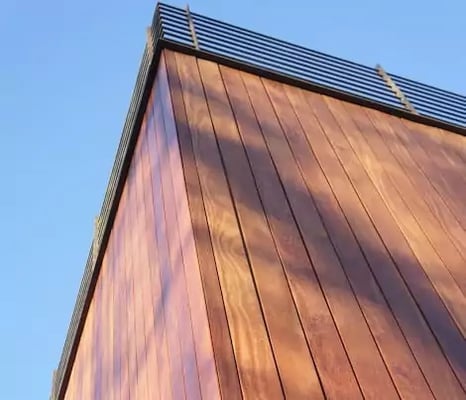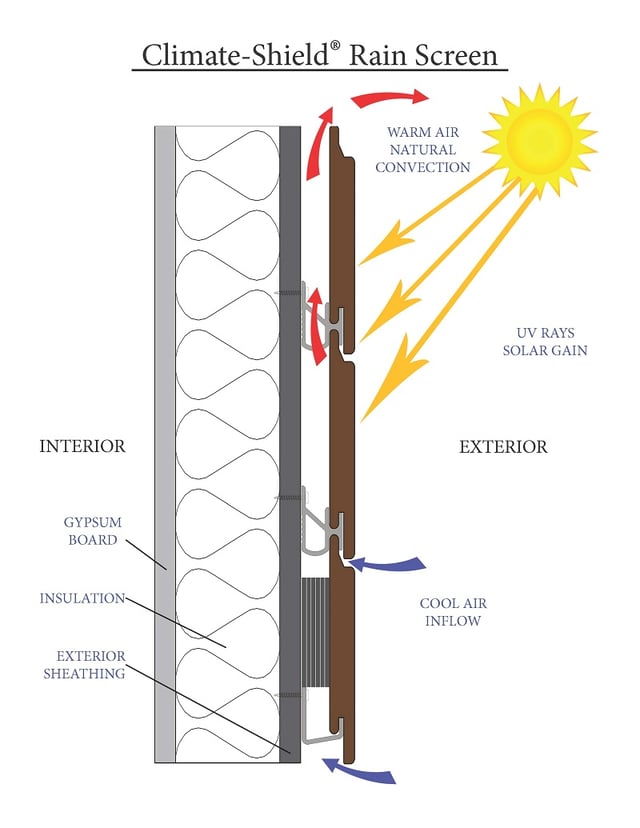
Related Posts



“An open joint wood rain screen is a construction method that uses wood siding as the outer “rain screen” layer, creates a “wall cavity” (space between the back of the siding and the outer building envelope) and has an open joint in the wood siding to allow for ventilation.”

The key benefits of an open joint wood rain screen versus a closed joint wood rain screen are twofold; an open joint allows any moisture to rapidly evaporate and escape from the wall cavity, and when designed properly, can also be a major energy savings for your building or home design. There are lots of methods to build an open joint rain screen and all are not created equal. A well-designed open joint wood rain screen will both ventilate and save energy. A closed joint rain screen (like a shiplap or shingle design with a wall cavity) provides a means for moisture to escape from inside the home or structure into the wall cavity, but often lacks a way for the moisture to get out of the wall cavity. Trapped moisture can lead to mold, rot and decay.
But won’t rain get into an open joint rain screen? Yes, it can, especially if the open joint is not properly designed (too wide of a joint or a poorly designed joint for examples), this can potentially lead to excess moisture in the wall cavity and also possibly degrade the vapor barrier (if UV rays hit it directly). However, a well-designed open joint rain screen allows moisture and bulk water to drain and escape, permits only a negligible amount of rain water to penetrate in the wall cavity and allows no UV rays to directly impact the vapor barrier.
A properly designed open joint rain screen system can be very energy efficient. By creating just enough of an open joint to allow moisture to escape, but not enough to allow lots of rainwater into the cavity, it is possible to create the optimum wood rain screen design. This design method will allow any of the hot air that is generated by high temperatures outdoors or direct rays from the sun to escape from the wall cavity with natural convective air currents. The Climate-Shield wood rain screen system achieves all of these design goals.
Although pressure equalization is one key factor in allowing any moisture trapped in the wall cavity to dissipate quickly, the open joint design of the Climate-Shield system is another equally important feature. When the sun’s rays heat up the rain screen siding, the air in the wall cavity behind the siding heats up. Because the system is designed with a hidden, but open joint, the natural convective air currents allow the heat to escape, away from the building envelope. This can be a major source of energy savings, especially in warm weather and warmer or sunny climates.
We hope you enjoyed this article. Please visit MataverdeDecking.com for more information about rain screen design, wood siding options and more.


